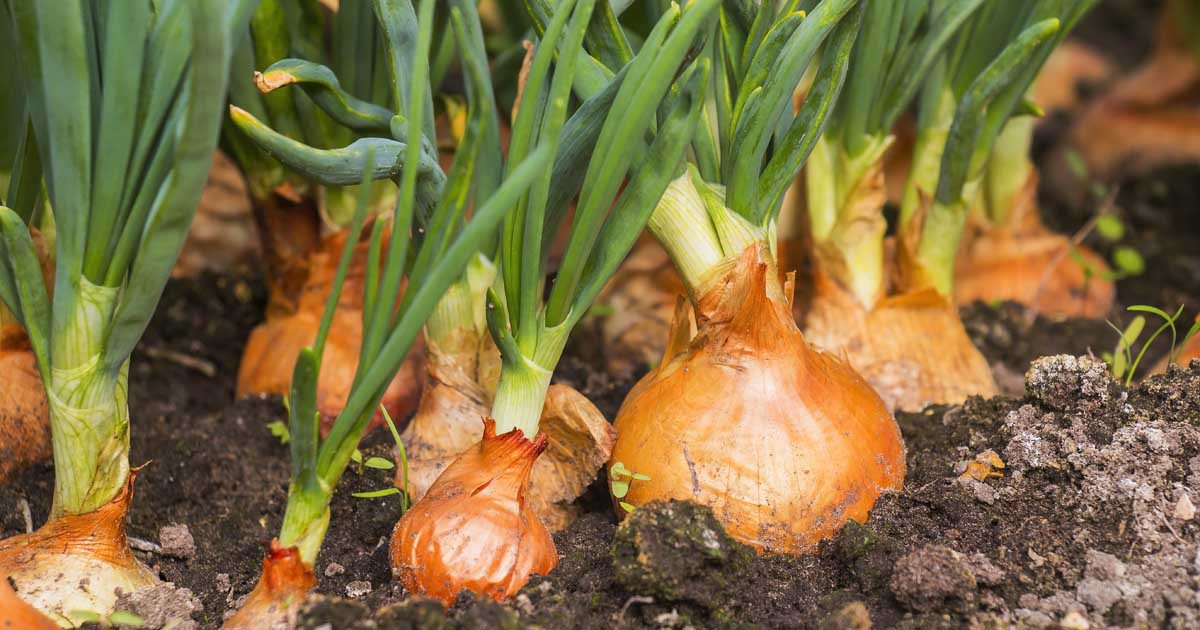
Cultivation of Onion (Allium cepa)
Onion is one of the most widely grown vegetables globally, known for its culinary and medicinal uses. It is cultivated in both temperate and tropical regions. Below is a detailed guide to the cultivation of onion.
Origin, Area, and Distribution
- Origin: Onion is believed to have originated in Central Asia, particularly in regions around Iran and Pakistan.
- Global Distribution: Onion is grown worldwide, with significant production in China, India, the United States, and Europe.
- Indian Distribution: India is the second-largest producer of onions, with major growing states including Maharashtra, Karnataka, Gujarat, Andhra Pradesh, and Tamil Nadu.
Climate Requirements
- Ideal Temperature: Onions grow best in cool weather, with an ideal temperature range of 13°C to 24°C. High temperatures (above 30°C) during bulb formation may cause reduced bulb quality and size.
- Humidity: Moderate humidity is suitable for onion growth. High humidity levels during storage can lead to diseases.
- Light Requirement: Onions are day-length sensitive. Long-day varieties are suited for higher latitudes, while short-day varieties are suitable for tropical regions.
- Frost Sensitivity: Onions are sensitive to frost, and the crop should be harvested before the first frost of the season.
Soil Requirements
- Soil Type: Onions prefer well-drained, sandy loam or loamy soil with a neutral to slightly alkaline pH (6.0 to 7.5). Heavy, waterlogged soils should be avoided.
- Soil Preparation: The soil should be plowed and harrowed to a fine tilth. Incorporate organic matter like well-decomposed farmyard manure (FYM) into the soil for improved fertility.
Improved Varieties of Onion
Several varieties and hybrids of onions are cultivated depending on the region and climate. Some popular varieties include:
- Pusa Red: A red variety with a good storage life.
- Pusa White Round: A white variety, popular for fresh consumption.
- N-53: A high-yielding variety with good bulb quality, mainly used for the fresh market.
- Agrifound Light Red: Known for early maturity and good color.
- Bhima Shakti: A hybrid variety with excellent yield and resistance to diseases.
Seed Rate
- Seed Rate: The seed rate for onion varies based on the type of planting (seeds, sets, or transplants).
- Direct seeding: Approximately 8–10 kg of seeds per hectare.
- Transplants: Approximately 4–5 kg of seeds per hectare for raising nursery beds.
Time of Sowing
- Seasonal Sowing: Onion can be grown in both rabi (winter) and kharif (monsoon) seasons.
- Rabi Season: Sowing is typically done between October and November.
- Kharif Season: Sowing should be done between June and July for areas with a warm climate.
- Nursery for Transplants: For transplanting, sow seeds in the nursery beds 6–8 weeks before the expected planting date.
Transplanting Techniques
- Transplanting: If using transplants, the seedlings are ready for transplanting when they are 6–8 weeks old and have 4–5 leaves.
- Spacing:
- In-row distance: 10–15 cm between plants.
- Between rows: 20–25 cm for normal varieties and 15 cm for hybrids.
Planting Distance Plant Spacing: Onions should be spaced 10–15 cm apart in the row, and the rows should be spaced 20–25 cm apart for optimal growth.
Fertilizer Requirements
- Organic Matter: Incorporate 10–15 tons per hectare of well-rotted farmyard manure (FYM) at the time of soil preparation.
- Nutrient Requirements:
- Nitrogen (N): 80–100 kg per hectare (apply in split doses: one at planting, one at 30–40 days after planting, and another at 60–75 days).
- Phosphorus (P): 40–60 kg per hectare (apply at planting).
- Potassium (K): 60–80 kg per hectare (apply at planting).
- Micronutrients: If deficiencies are observed, foliar sprays of boron or zinc may be applied.
Irrigation
- Irrigation Needs: Onions require moderate irrigation throughout their growth period.
- Initial Growth: Water regularly during the early stages to promote germination and early growth.
- Mature Bulbs: Once the bulbs start forming, reduce irrigation to prevent waterlogging, which can affect bulb quality.
- Drip Irrigation: It is preferred for water conservation and uniform watering.
Weed Management
- Weeding: Weeds should be controlled through regular hand weeding, especially during the early stages of growth.
- Mulching: Applying organic mulch can help conserve moisture and suppress weed growth.
- Herbicides: Pre-emergence herbicides like pendimethalin can be used for weed control before the plants establish.
Pest and Disease Management
- Pests: Common pests affecting onions include onion thrips, onion fly, and cutworms. Control using appropriate insecticides or organic methods.
- Diseases: Common onion diseases include downy mildew, neck rot, and bulb rot. Use fungicides like copper oxychloride or maneb for controlling fungal infections.
Harvesting
- Time to Harvest: Onions are ready for harvest when the tops begin to yellow and fall over, generally after 100–150 days, depending on the variety.
- Signs of Maturity: The bulbs should be mature, with fully developed scales and dry necks.
- Harvesting Method: Onions are harvested by lifting the bulbs from the soil using a hand fork or mechanical harvesters. After harvesting, the bulbs should be cured for a few days under the sun to reduce moisture content and enhance storage life.
Yield
- The average yield of onion varies by region, variety, and farming practices:
- Fresh Market Yield: Around 20–30 tons per hectare for properly managed crops.
- Storage Yield: Onions for storage usually yield between 15–25 tons per hectare.
Physiological Disorders of Onion
- Bolting: Premature flowering caused by high temperatures or stress, leading to the formation of inedible flowering stalks.
- Neck Rot: Fungal disease that affects the neck of the bulb, leading to decay. Caused by pathogens like Botrytis or Sclerotium.
- Leaf Tip Burn: Caused by water or nutrient stress, particularly calcium deficiency.
- Yellowing of Leaves: Can occur due to nitrogen deficiency or poor soil fertility.
- Soft Rot: A bacterial infection that causes the bulbs to become mushy and spoil during storage.

